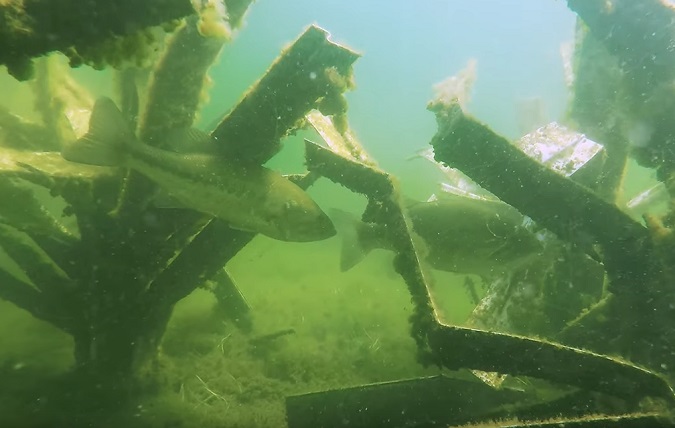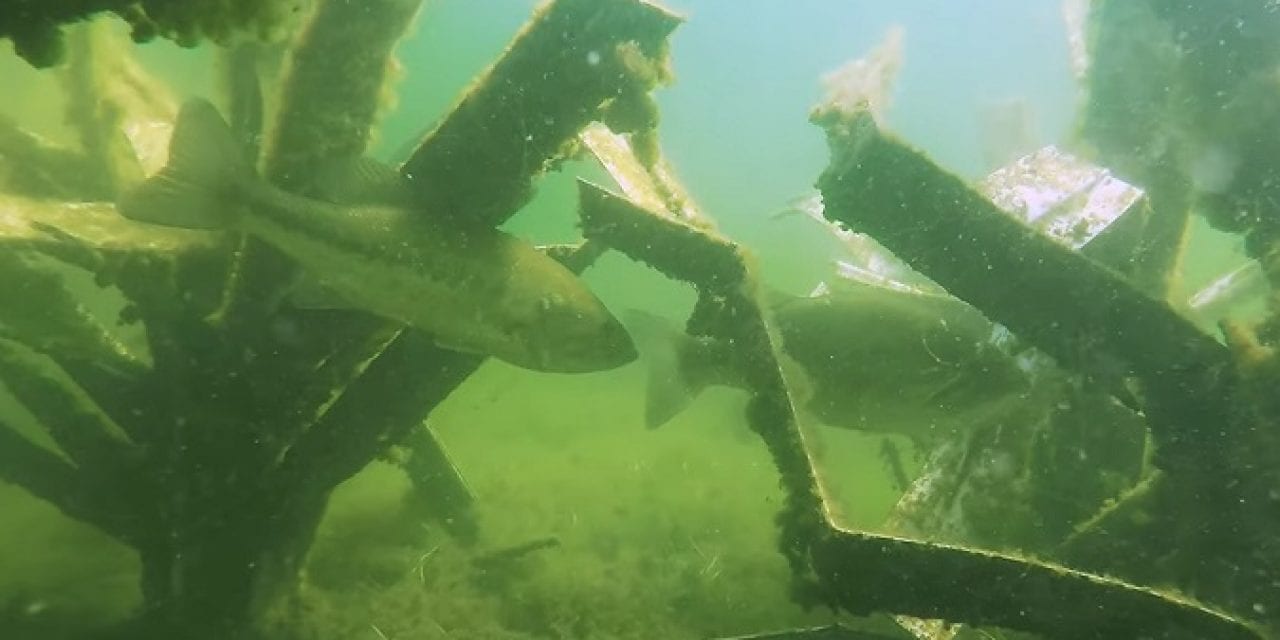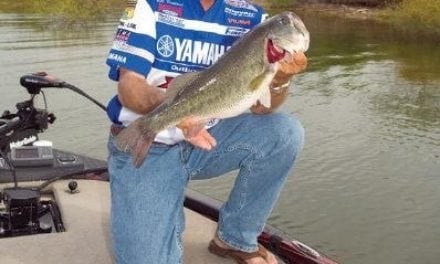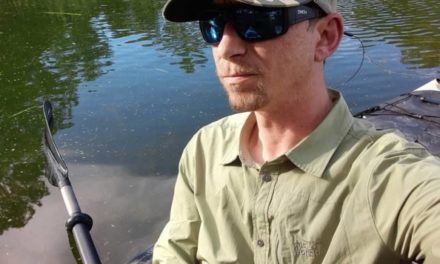
Part Five: Location and placement- After design, the single most important aspect of creating successful artificial habitat that fish will use is location. In testing Fishiding habitat, we’ve spent a great deal of time studying placement and there seems to be three obvious but often overlooked tenets that can make the difference between success and failure. The three aspects concern location, bottom substrate and constellation.
1) Location: Success depends largely on depth. When artificial habitat is placed shallow enough to let sunlight reach them, they can quickly grow algae and other organic material. This serves as a food source for juvenile fish and also makes the structures fuller and denser. If deployed in the littoral zone, they become much more accessible to newly hatched fry that will quickly colonize them and use them for shelter and protection which may help to improve survival rates. When placing any habitat in deeper water, it’s important to know what the dissolved oxygen profile is. If placed in water too deep where DO levels are insufficient, they’ll naturally go unused. Therefore, it’s important to have a good understanding of the target lake’s topography, recruitment history and bio-chemical character. This will ensure that the habitat is placed in a location where it will be best used and where the employment of additional habitat would serve a purpose beneficial to the fish.
When we’re testing Fishiding artificial habitat, we’re also mindful of precise placement sites. Placing fish habitat in known fish locations or areas where fish are regularly caught is not a good way to prove their effectiveness. If fish are already congregating under a dock for example, placing any artificial fish habitat in that same location and catching fish, does nothing to authentic their ability to attract fish. All you’re doing is demonstrating that the units don’t seem to repel fish. We prefer to test and evaluate Fishiding habitat in areas that fish aren’t already using. In doing so, we can evaluate whether fish are truly attracted to the newly placed habitat models. When they are, we’ve then created an additional and useable habitat site for them, not unnecessarily bolstering a spot they were already using.
2) Bottom Substrate: To maximize the effectiveness of Fishiding artificial fish habitat, whenever possible, they should always be placed in areas with a hard bottom substrate. If placed on a lake bottom with 12 inches of muck let’s say, any habitat type will sink into the mire and you’ll effectively lose a foot of height. Since the vertical height aspect of fish habitat is critical, you certainly don’t want to diminish that attribute. You also don’t want any part of the construction buried or otherwise covered where it can’t perform the functions it’s designed to.
3) Constellation: Artificial habitat units located in very close proximity to each other, always outperform single units standing alone. Fish will treat the combined individual units as one large, meandering reef. By creating limitless variety in the largest habitat complex you can assemble, the term “bigger is better” truly applies. In addition, by employing multiple units in a single location, you create a mosaic or tapestry of true habitat that amplifies the effectiveness of the entire grouping. Typically, fish managers may want to place fifty structures in ten different locations, comprised of five units each. Understanding the desire to cover as much ground as possible, we encourage you to resist that impulse. Instead in this scenario, create a single giant complex of 50 units all at one site. This creates so much more synergy and dynamism. The more complex and dense the habitat is in any one location, the better, for the fish.
Designing and building effective fish habitat is a science. It’s still in its infancy, but we’re learning a great deal every day about the nuances of design and deployment. With today’s deep interest in artificial fish habitat, we’re eager to share our findings with fisheries professionals who want to learn more. We’ve come a long way since the days of throwing discarded Christmas trees into our lakes and calling it a day. Stay tuned. In this continuing series, we’ll show you more underwater video of how fish utilize artificial habitat and why so many popular designs are completely ineffective.
If you’ve missed any part of this series you can catch up at https://www.youtube.com/watch?v=6Krzy… For more information contact David Ewald at https://www.fishiding.com Phone: (815) 693-0894 Email: sales@fishiding.com
Related Topics:
- Artificial Fish Habitat With Fishiding
- A Fishing Xanadu
- Seneca Nation using grant to improve reservoir fisheries
The post The Science Behind Fishiding Artificial Fish Habitat-Underwater Video appeared first on OutDoors Unlimited Media and Magazine.
















